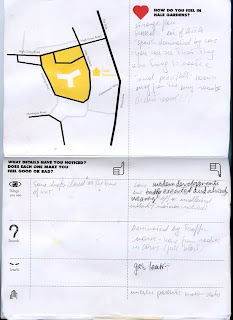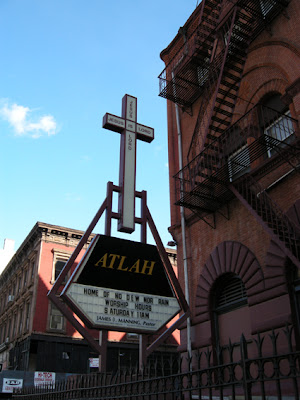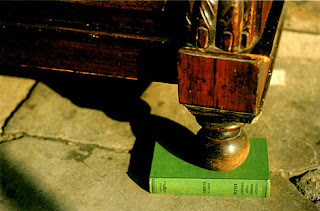Today we consulted Interaction Designer Andy Huntington and Illustrator Micahel Salmon for their opinions on how we might make the forthcoming outings interesting and useful (to help reveal and unravel 'urban lexicons'). Here are some of the comments and notes:
- Maybe Outing 1 should be with very little preempting or props and very little in-visit evaluation. .. Just a 'find your route to and through the spaces' outing first and ask for general first impressions: what do you remember, how did you feel, what did you like/ dislike?
- After visit could have cloud of words which Participants circle ,or hidden buzzwords, which we log/ map if they say them.
- Don't introduce too much info or description or request for evaluation before Visit 1.
- Then Outing 2 could be more evaluative, with a camera/ voice recorder or similar.
- If we use a form or Participant Comments Card it could be filled in on the tube, between sites, to make the most of time available.
- Still picture and audio voice recording of why each detail is taken (visit 2).
- Taboo-like game could mean not allowed to use specific words to describe feelings or place - eg, not not allowed to say nice, or like, or good.
- Could not all start together, but could agree to all end together by meeting in specific place.
- First day really quick?
- Give drawings simplified map?
- Visit 1 in one direction and Visit 2 in the other direction.
Give/ draw simplified map for each area.
- MW take 2 people round, RV take 2 people round to avoid too much delay with staggered starts.
- Could give arrow or pointer for people to locate in view for each photo, so it is clear what is being phtographed.


























